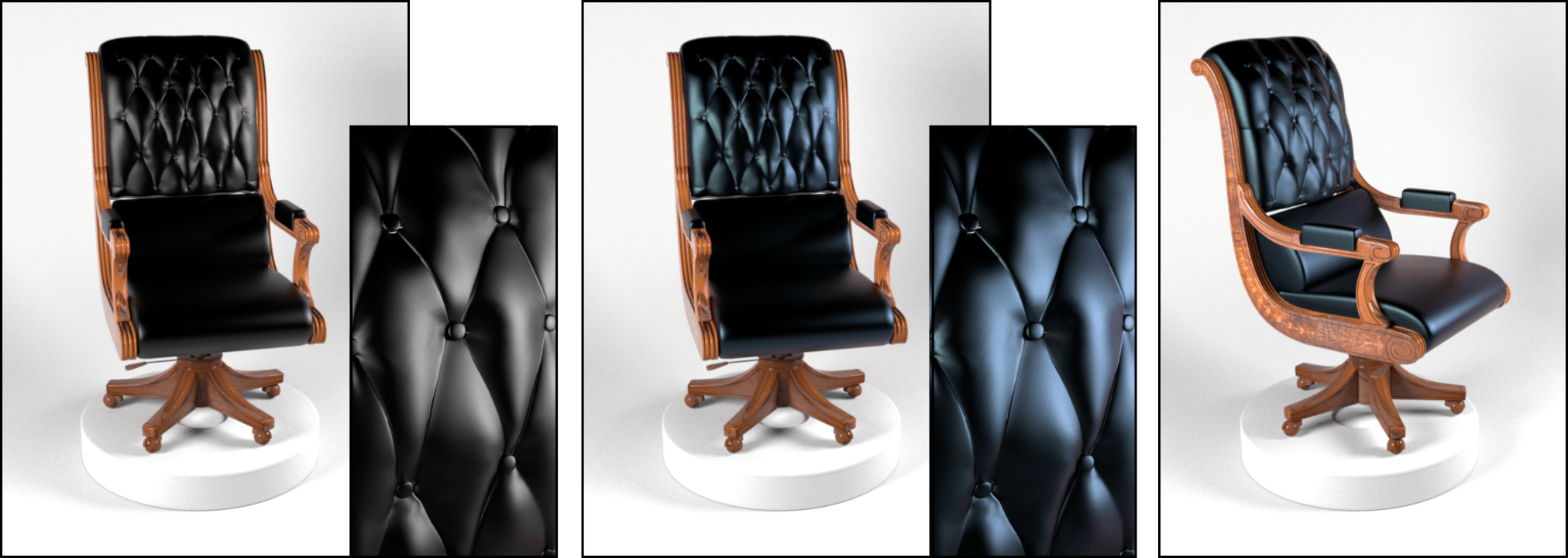Section:
New Results
Analysis and Simulation
A Two-Scale Microfacet Reflectance Model Combining Reflection and Diffraction [14], [24], [19]
Adequate reflectance models are essential for the production of photorealistic images. Microfacet reflectance models predict the appearance of a material at the macroscopic level based on microscopic surface details. They provide a good match with measured reflectance in some cases, but not always. This discrepancy between the behavior predicted by microfacet models and the observed behavior has puzzled researchers for a long time. In these papers [14], [24], [19], we show that diffraction effects in the micro-geometry provide a plausible explanation. We describe a two-scale reflectance model (cf. Figure 8), separating between geometry details much larger than wavelength and those of size comparable to wavelength. The former model results in the standard Cook-Torrance model. The latter model is responsible for diffraction effects. Diffraction effects at the smaller scale are convolved by the micro-geometry normal distribution. The resulting two-scale model provides a very good approximation to measured reflectances.
Figure
8. Material reflectance properties are caused by small variations in surface geometry.
We separate these surface variations into micro-geometry, of size larger than the wavelength
of visible light, and nano-geometry, of size comparable to the wavelength. The latter produces
diffraction effects, with wavelength-dependent effects. The former corresponds to the classical
Cook-Torrance lobe. We explain how these two levels interact and show that combined together,
they reproduce measured materials faithfully, including subtle color shifts.
|
|
A Practical Extension to Microfacet Theory for the Modeling of Varying Iridescence [11]
Thin film iridescence permits to reproduce the appearance of leather. However, this theory requires spectral rendering engines (such as Maxwell Render) to correctly integrate the change of appearance with respect to viewpoint (known as goniochromatism). This is due to aliasing in the spectral domain as real-time renderers only work with three components (RGB) for the entire range of visible light. In this work [11], we show how to anti-alias a thin-film model, how to incorporate it in microfacet theory, and how to integrate it in a real-time rendering engine. This widens the range of reproducible appearances with microfacet models (cf. Figure 9).
Figure
9. Material appearance such as that of leather is usually reproduced with microfacet models in computer graphics. A more realistic result is achieved by adding a thin-film coating that produces iridescent colors. We replace the classic Fresnel reflectance term with a new Airy reflectance term that accounts for iridescence due to thin-film interference. Our main contribution consists in an analytical integration of the high-frequency spectral oscillations exhibited by Airy reflectance, which is essential for practical rendering in RGB. When the scene is rotated, goniochromatic effects such as subtle purple colors may be observed at grazing angles.
|
|




